Situated in northern Ethiopia, the town of Lalibela is named after King Lalibela of the Zagwe Dynasty. The town is considered Ethiopia’s cultural capital and one of Ethiopia’s holiest cities, it serves as a centre of pilgrimage. The undeniable highlight of this ancient capital is dubbed the ‘Eighth Wonder of the World’ and includes eleven rock-hewn churches dating back to the 13th century. This UNESCO World Heritage Site is carved out of solid rock and includes subterranean monoliths, a network of interconnected tunnels, and chambers featuring magnificent frescoes. Lalibela also plays host to some of the most famous church festivals in Ethiopia.



Situated on the southern shores of Lake Tana in northern Ethiopia, Bahir Dar serves as the capital city of the Amhara region. The city features palm-lined avenues and was awarded the 'UNESCO Cities for Peace Prize' in 2002, for addressing the challenges of rapid urbanisation. Bahir Dar is a popular tourist destination in Ethiopia, offering a wonderful selection of attractions in the surrounding area. Visit some of the world’s oldest medieval monasteries and churches on the islands scattered within Lake Tana, and discover the spectacular Blue Nile Falls, featuring a 45-metre drop, an impressive 400-metre width, and an array of misty rainbows.



Situated southwest of the Simien Mountains, north of Lake Tana, Gondar once served as the royal capital of the ancient Ethiopian Empire. Known as the ‘Camelot of Africa’, Gondar is home to the World Heritage Site of Fasil Ghebbi, a fortress-city previously inhabited by to the Ethiopian emperor Fasilides. Visitors can enjoy a wide selection of wonderful activities. Explore the ancient Gondar Castle, a medieval castle and palace complex; the 17th century Church of Debre Sina, featuring biblical murals on every wall; and visit the beautiful nearby Simien Mountains National Park. Don’t miss a visit to Ras Dashen, the highest mountain in Ethiopia.



Situated in northern Ethiopia, the Simien Mountains National Park is one of the very first natural UNESCO World Heritage Sites. It has been compared to the Grand Canyon with its spectacular landscape featuring rugged peaks, deep valleys and plunging waterfalls. Renowned as Ethiopia’s highest Peaks, the Simien Mountains reach up to 4000 metres high. This area is home to remote local communities as well as rare and endangered fauna and flora. Some of these rare species include: gelada baboon, the Simien fox and the only walia ibex population in the world. Don’t miss the panoramic views from Ras Dejen, the highest point in Ethiopia.



As previously described



Situated in northern Ethiopia, Axum, also Aksum, is the ancient capital of the old Kingdom of Axum, one of the most important historical sites in sub-Saharan Africa. The town of Axum is the centre of a myriad of religious mysteries. It is said to be the home of the biblical Ark of the Covenant, the previous home of the Queen of Sheba and it is believed to be the resting place of one of the wise men. Axum's historical archaeological sites have been added to the UNESCO World Heritage List. The undeniable highlight of this ancient city and its most renowned surviving monuments is a group of memorial monolithic obelisks, or stelae, built between the third and fourth centuries A.D.



Wukro, formally known as Dongolo, is a charming town set amidst expansive semi-arid landscapes in the picturesque region of Tigray, Ethiopia. Travellers can spend their days admiring the spectacular surrounding vistas, sampling the mouth-watering local cuisine, or visiting the alluring Wukro Central Mosque. The town’s major drawcard, resting on the eastern outskirts, is the enchanting Wukro Chirkos, an Orthodox Tewahedo monolithic church, featuring a cruciform layout. Don’t miss out on the ancient rock-hewn churches of Tigray - 120 intriguing structures built into pre-existing caves or atop a plateau.
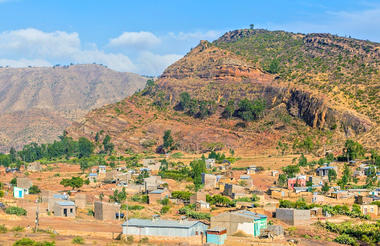
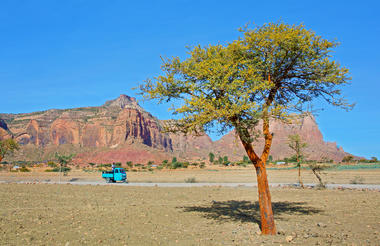
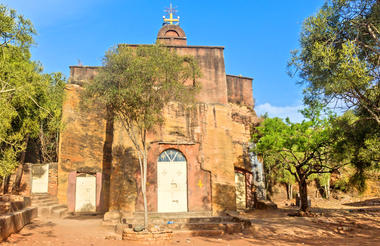
Situated in the heart of northern Ethiopia in the Tigray Province, the labyrinthine mountain system of Gheralta is home to the largest cluster of cliff churches in the country. These ancient 1000-year-old cave churches are undoubtedly one of Ethiopia’s top attractions, but they are largely undiscovered. The area is covered with rugged mountains, dramatic cliffs, and unique rock formations. Adventure lovers can look forward to exploring the scenic canyons, viewing the centuries-old frescoes decorating these rock-hewn Ethiopian Orthodox cave churches, and soaking up the spectacular mountain views. Visitors can experience an array of eco-friendly outdoor activities, including mountaineering and hiking.



Set in northern Ethiopia, Mekelle serves as the capital city in the Tigray region. This friendly city provides an excellent stopover for visitors travelling through the region. Enjoy a day trip to over 120 rock-hewn cave churches situated just 80 kilometres out of the city in the Wukro or Geralta, explore the streets of the Mekelle on foot, and view Yohannes Castle a multi-turreted classic castle. Some other highlights include: the 19th-century Emperor Yohannes IV Palace, a museum where visitors can learn about local history, and Martyrs’ Memorial Monument, tower spiralling more than 30 metres above the ground.
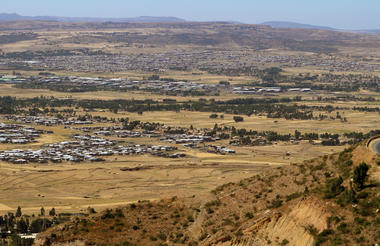
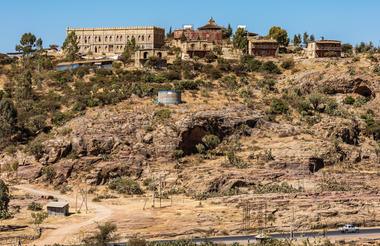
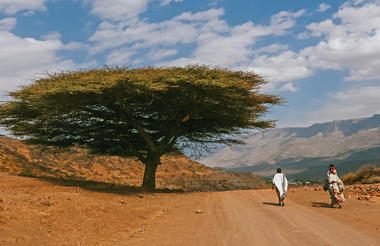
Located in the highlands fringing the Great Rift Valley, Addis Ababa serves as the political, cultural and commercial centre of Ethiopia. This sprawling city rests in the foothills of the Entoto Mountains and features a mix of traditional homes, elegant villas, and tall office buildings. Visitors can look forward to a selection of wonderful activities including: visiting the National Museum, displaying local art, traditional crafts and prehistoric fossils; exploring the copper-domed Holy Trinity Cathedral, a Neo-Baroque architectural landmark; and sampling rich Ethiopian coffee as well as the memorable cuisine featuring spicy stews and Ethiopia’s signature Injera bread.






